Day hikers can explore a pair of canyons in the Mecca Hills on the Utah Canyons Trail.
The 2.7 mile loop heads up Little Utah Canyon, offers great views along a ridgeline, then runs down Big Utah Canyon. As the trail follows canyon washes, the route will be sandy, so wear quality hiking boots and bring a trekking pole.
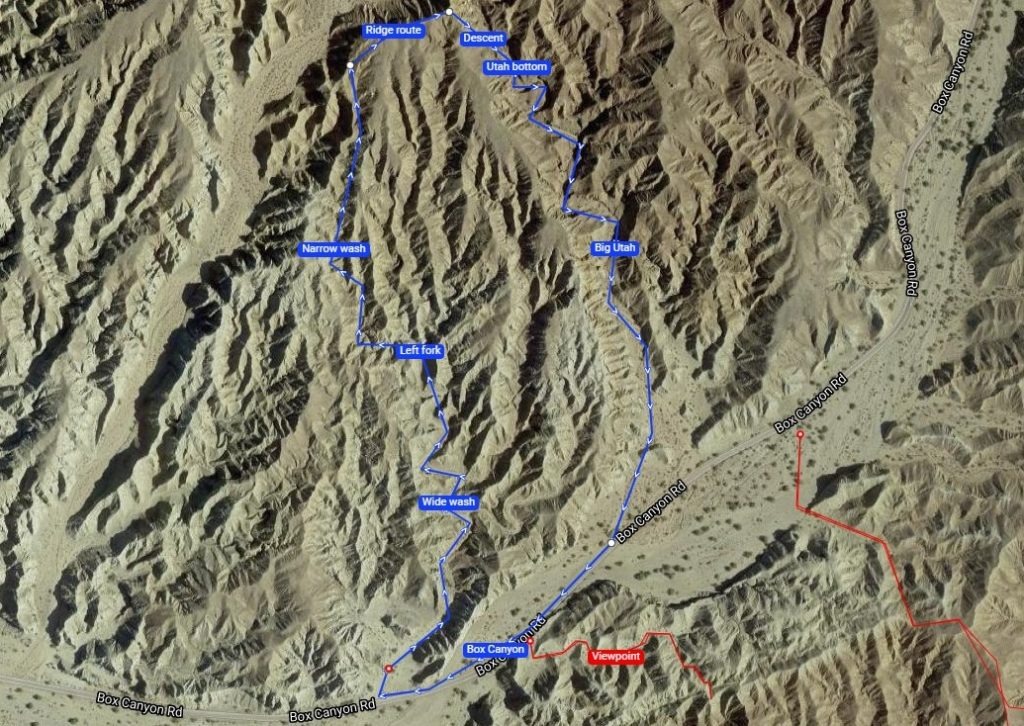
Utah Canyons Trail aerial map
To reach the trailhead, take Calif. Hwy. 111 to Mecca. Turn northeast onto Fourth Street then at the roundabout veer right/southeast onto Hammond Avenue. Next, go left/east onto 66th Avenue. As the street curves northeast toward the Mecca Hills, it becomes Box Canyon Road. After crossing the Coachella Canal, drive about 5 miles into Box Canyon with the Mecca Hills badlands formations rising on both sides of you. Park off the side of the road. If you see the Sheep Hole Oasis parking area, you’ve gone too far.
The trailhead begins in a wash on the road’s north side. Ascend the wash along the other side of the ridgeline that forms one of Box Canyon’s walls.
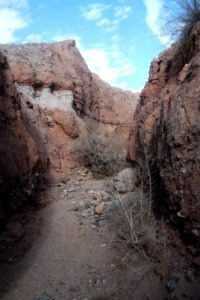
At times, the canyons narrow significantly, especially in Little Utah Canyon.
Your trail zigzags and serpentines through the Mecca Hills, following Little Utah Canyon the entire way. At times, the canyon narrows considerably.
Cactus and other scrub vegetation can be spotted along the trail and ridgelines. You’ll also spot a palo verde tree and plenty of desert lavender.
The highlight of the trail is the Mecca Hills’ geology, however.
The Mecca Hills are being uplifted as the North American and Pacific tectonic plates slide against one another along the nearby San Andreas Fault. When rain falls across the almost barren hills, the rushing water cuts through the rock, forming the canyons. Wind then continues to shape the clefts and gorges.
Some of the exposed rock at the canyons’ lowest points are more than 600 million years ago. The process of erosion continues today, leaving a layer of soft sand across the canyon floors.
You’ll get up close and personal with the geology about 0.3 miles in. Large boulders that broke off the canyon wall have fallen across the trail, and you’ll need to walk around them.
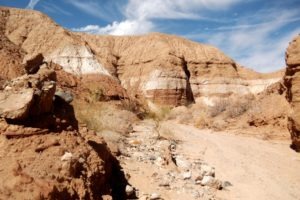
03 – Many fascinating rock formations can be seen in the canyons, which cut through 600 million years of geological history.
The higher you head into the canyon, the rockier the route gets. You’ll greatly appreciate your hiking boots and trekking pole in this section.
At 1.3 miles, you’ll reach the Little Utah Canyon overlook then continue the top side of the loop along a ridge. This stretch offer great views of the Salton Sea and the Santa Rosa Mountains to the southeast.
Covering 343 square miles, the Salton Sea is California’s largest lake; its greatest depth is 43 feet. The Santa Rosa Mountains stretch for 30 miles with its highest point Toro Peak at 8,716 feet.
About 1.5 miles in, at the top of the ridgeline, turn right/southeast and begin your descent through Big Utah Canyon to Box Canyon.
Various colored rocks of red, gray and white line the canyon walls. Many of the rocks here are sediment deposited long ago by the Colorado River while others were heated, pulverized and reshaped by the friction of uplift.
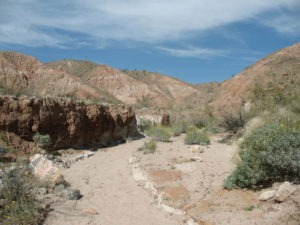
Though the Mecca Hills is largely a barren badlands, green spots can be found on the Utah Canyons Trail.
The trail reaches Box Canyon Road northeast of where you parked. Walk southwest alongside the road; to your right is the ridgeline that you traversed the other side of at the hike’s start. Upon rounding the ridgeline, you’ll spot your vehicle.
While the shadows of the canyon walls offers some shade, the trail otherwise is entirely exposed to the sun. Be sure to don sunscreen, sunglasses and a sunhat as well as bring plenty of water. Never hike the trail if rain is forecast or if rain has fallen within the past couple of days.
Image Sources
- 02-–-at-times-the-canyons-narrow-significantly-especially-in-little-utah-canyon.: Rob Bignell
- 03-–-many-fascinating-rock-formations-can-be-seen-in-the-canyons-which-cut-through-600-million-years-of-geological-history.: Rob Bignell
- Barren Badlands: Rob Bignell
- Utah Canyons Trail: Rob Bignell

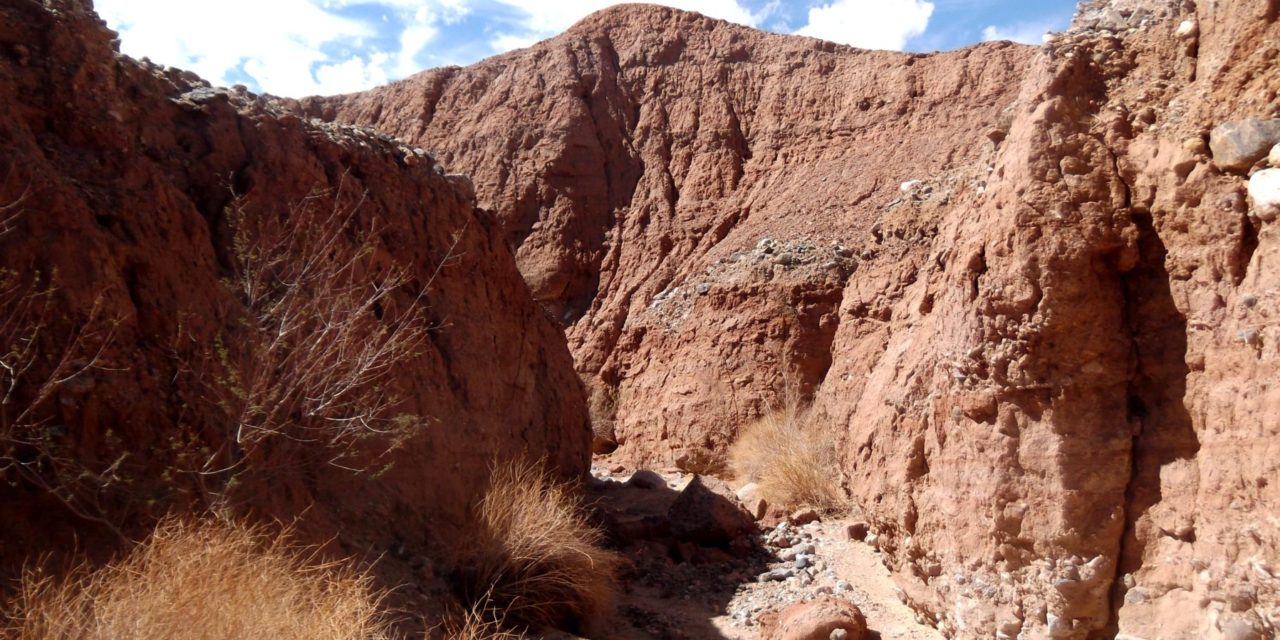



![Enrolling Now, Rewarding Careers Ahead [Sponsored]](https://ukenreport.com/wp-content/uploads/2024/04/COD_heroes_1-1385-2-440x264.jpg)

